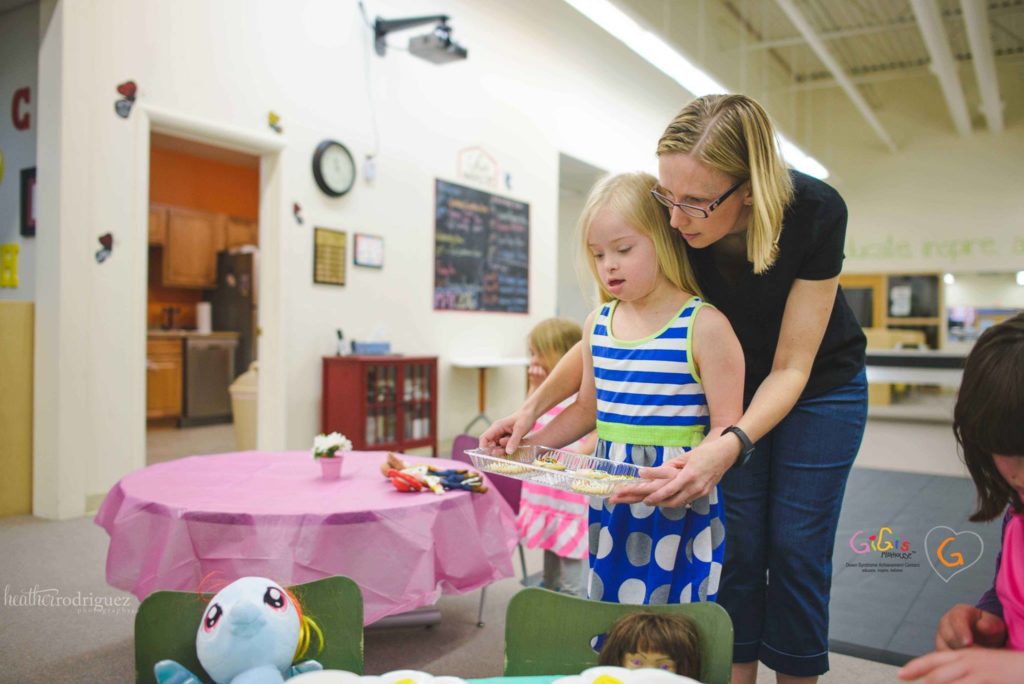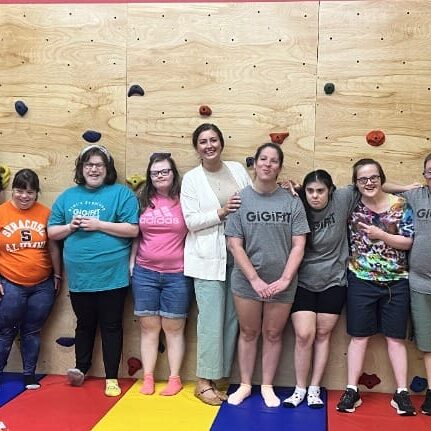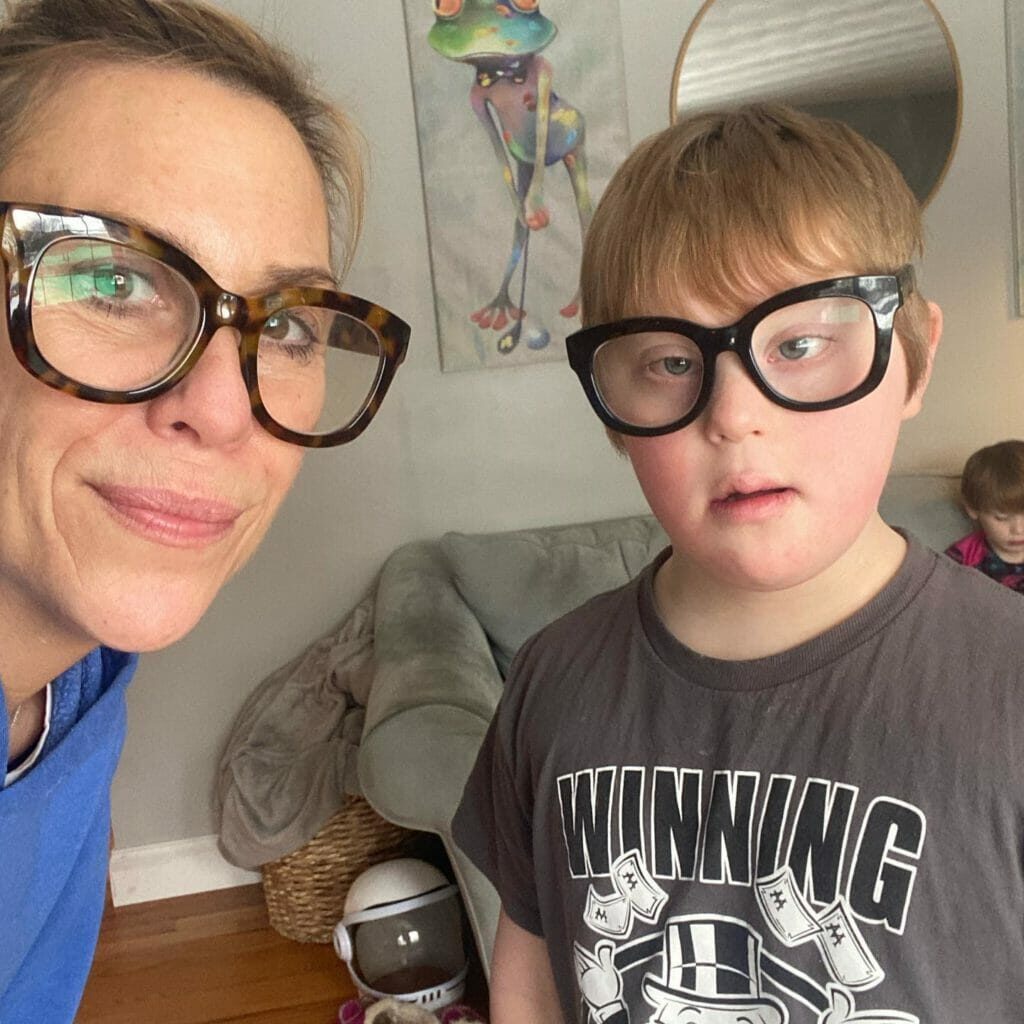What’s the Deal with Gluten? | GiGi’s Playhouse Syracuse
Gluten is a big deal now a days. We all know someone who is “gluten free” either because of a dietary choice or due to a medical diagnosis. Today we want to talk about Celiac Disease and how it effects the Down syndrome community.
What is Gluten? Gluten is a mixture of proteins found in wheat and related grains, including barley, rye and oat. Gluten is appreciated for its stretchy properties. It gives elasticity to dough, helping it rise and keep its shape and often gives the final product a chewy texture. In certain people gluten can cause some unpleasant symptoms including, diarrhea, stomach upset, abdominal pain, and bloating that can lead to significant damage if ignored. If you notice these in yourself or your child talk to your doctor to discuss further.
So why are we even talking about this? Well individuals with Down syndrome have an increased risk of also having the autoimmune disease called Celiac disease and it is important to understand what it is and how it effects the body.
Celiac disease is a condition where the body is unable to properly digest barley, rye, and wheat products, causing damage to the lining of the intestine and preventing the absorption of certain nutrients. As the condition can range from mild to severe, the symptoms can also vary. Possible symptoms include difficulty gaining weight, diarrhea, vomiting, constipation, nutritional deficiencies and general irritability or behavior changes. An initial diagnosis can be made through a simple blood test, but a definitive test requires a special procedure from a GI specialist.
There is a higher risk of this condition in individuals with Down syndrome; up to 16% of individuals with Down syndrome are believed to have Celiac disease. Because of this high percentage, all infants with Down syndrome between the ages of 2 and 3 should be screened for Celiac disease with the simple blood test. In addition, doctors should consider screening tests for adults with Down syndrome, especially when there is weight loss, poor nutrition or persistant changes in bowel habits. Left untreated, Celiac disease can result in malnutrition, decreased growth, and, in rare cases, intestinal cancer (lymphoma). The treatment is dietary and involves eliminating all barley, rye, and wheat from a person’s diet. (info from NDSS)
Pam Dwyer is sharing how Celiac’s has effected her family and how Miss Ava is learning how to make good choices for herself.

(Miss Ava sharing some gluten free goodies with her friends at Playhouse Pals.)
“Let me start by saying if you know the Dwyer kids, you know they like food! At parties, at playgroup, in the car, you name a place and they want to eat. Whenever Celiac disease came up with GiGi’s friends or doctors we always thought “how awful”, “poor kid” and “please, please don’t let that happen to us!”
Then out of the blue last year, when Ava was 8, our healthy little girl started complaining of stomach aches. A lot of stomach aches. Stomach aches that kept her from doing the things she enjoyed. Stomach aches that kept her in bed with a warm corn bag on her stomach. With the stomach aches came occasional diarrhea. At first the doctor suspected constipation, but treatment for that didn’t help. We knew. We could just feel it. We took Ava for the Celiac screening she gets every year, which is just a simple blood test. Her numbers were through the roof! Not just a little elevated, but “we have never seen levels this high that resulted in a negative biopsy” high. So she had the endoscopy and biopsy and of course it came back positive.
We started her on the gluten free diet right after the endoscopy. Her stomach aches slowly diminished until having a stomach ache was a rare occurrence instead of a daily event. It was difficult at first. She wanted food she couldn’t have and would sneak it when we weren’t looking. With four kids, it just wasn’t feasible to elimate all gluten containing food from our house. We started hiding and sneaking food we knew she really liked and couldn’t have, like donuts. We all became the food police. My son would grab food from Ava and I would chase after her and make her spit out food.
I realized I needed to get her on board. I started showing her labels that said Gluten-Free and talking to her about food that is okay and food that will make her tummy hurt. Slowly, she started asking if food was okay for her to eat. At home she has a shelf of gluten free snacks she can get herself. The other day I found an open bag of Goldfish on the counter and ran to find her. She was eating gluten free pretzels, but had poured her little sister a bowl of Goldfish. The other night she asked if something was gluten free for the first time!
She now understands that there are foods she cannot eat because they will make her sick and we are trying hard to find ways to get her the foods she likes in gluten free versions. Luckily, gluten free food is now readily available at the grocery store. I have to go to three or four different grocery stores to get the things she likes, but I can get them. We can even get a gluten free pizza delivered on pizza night! Ava’s gluten free diet will always require a little more planning and creativity, but it is certainly not the devastating diagnosis I feared.
Oh, and if you ask my daughter what she had for breakfast yesterday and she says (gluten free) “brownies”, don’t judge… rememember you have to be creative when your child has Celiac Disease. A chocolate frosted brownie is almost the same thing as a donut, right?”

(Ava has a super duper mom helping her navigate this world of yummy food. They both are quickly becoming experts on Gluten Free Eating!)
Thank you so much for sharing your story! Ava is already a pretty strong self advocate and it is a joy to watch her grow and learn to make good choices for herself.
Our friends at Wegmans have a wonderful gluten free section that we at the Playhouse shop often for all our Playhouse snacks and for our Gluten Free Cooking Program. Parents of younger kids, if you would ever like to stop in and see the fun we are having and get some yummy tips and ideas our teens and adults will welcome you with open arms! You can also find some great Gluten Free recipes on our Pinterest page HERE
educate.inspire.believe
Recent Posts




